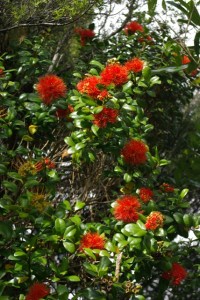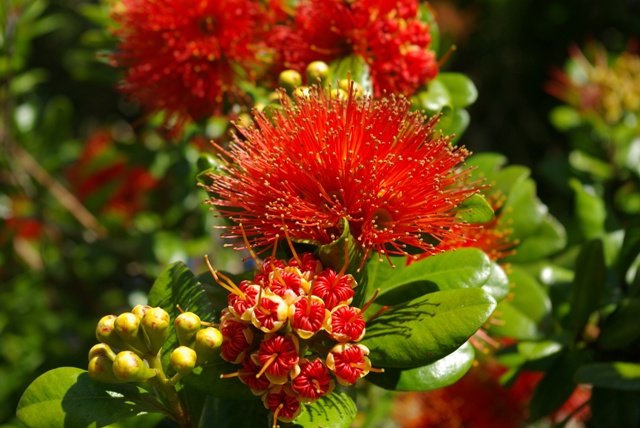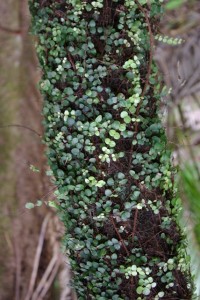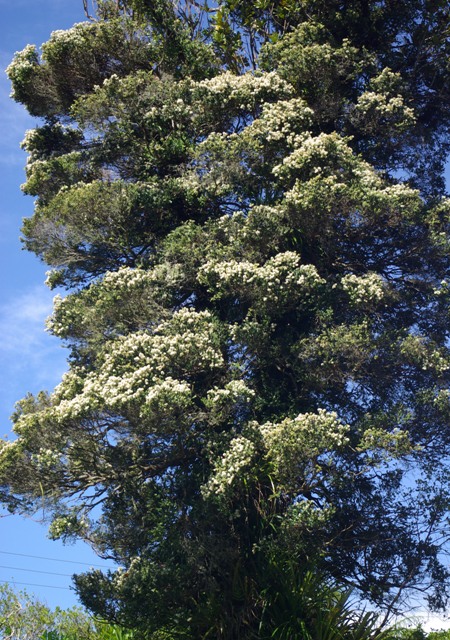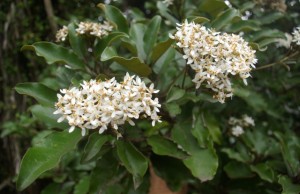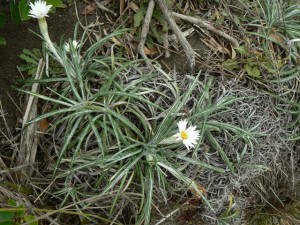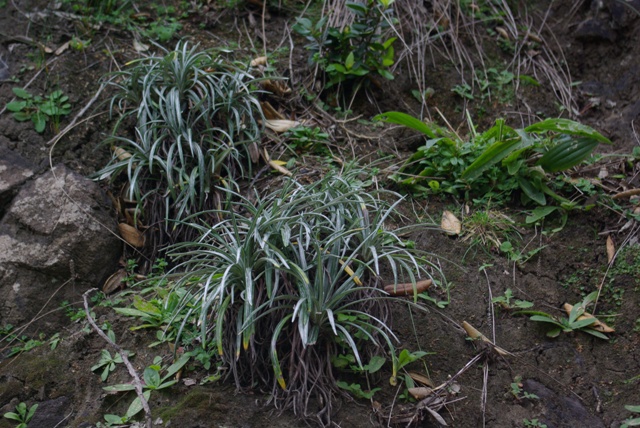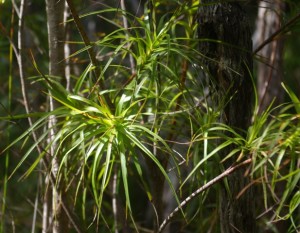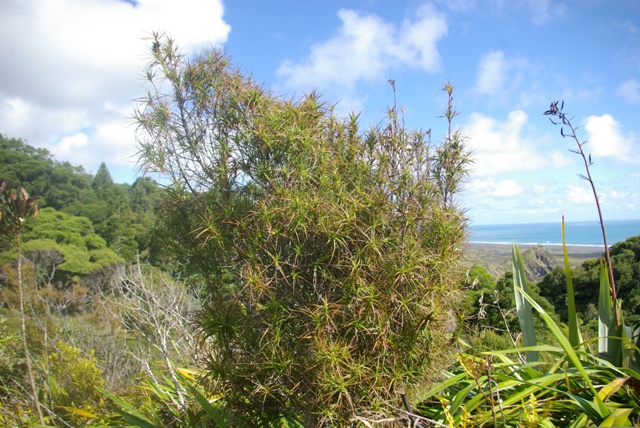Aka/akakura or scarlet rata vine
Metrosideros fulgens family Myrtaceae
This flamboyant member of the pohutukawa family provides a wonderful show in late summer. A climber, it appears as flashes of brilliant red in the bush and on roadsides. The Latin word “fulgens” means shining or glistening and aka really does live up to this name.
One of the most reliable displays is a cluster of plants just before the Karekare turn-off. The photos shown here were taken of these plants.
Aka can grow up trees of 10 metres of more, it will spread horizontally from tree to tree and if it runs out of trees if will scramble on the ground forming a dense thicket. It has thin aerial roots that attach to the host plants a bit like an ivy plant.
The shiny leaves are placed opposite on the thick stems and are quite hard, like pohutukawa, but bright or dark green.
The plant flowers February to June and appears in clusters from which the stamens unfurl, each tipped with gold.
Aka grows in lowland and coatsal forest all over the North Island and northern South Island.
Akatorotoro or white rata
Metrosideros perforata family Myrtaceae
Another member of the beautiful rata family, a vine that attaches to a host or can grow without support into a shrub or tree. Found in lowland and coastal forests and forest margins, this specimen growing up a nikau was photographed in the forest in the Nikau Glade.
Aka attachs to its host with masses of tiny roots, a bit like an ivy plant. It can ascend as high as 15 metres into a tree, or even further as the specimen below shows, photographed smothering an old rewarewa on the side of Piha Road.
The leaves and small, shiny and lined up opposite each other on the stems as seen in the photo. As the plant ages, the leaves become larger and more leathery.
This rata flowers in profusion from January to March. The flowers are like tiny pohutukawa flowers and they are usually white, but can be pink or yellow.
As the vine ages, it is not unusual for stems to drop off and drape down from high branches.
Akepiro
Olearia furfuraceae Family Asteraceae
The bursts of white in the coastal bush in January and February could well be the showy coastal tree daisies – one of the olearias. It particularly likes forest margins and streamsides so that you will see them flowering on the roadsides around Piha. Akepira grows to be a shrub or tree up to 5 m tall.
It has thick dark green leaves with wavy margins and underneath are buff-coloured and satiny. The flower heads are profuse but the petals are sparse, not all around the clock like most daisies.
They can be grown from seed.
Celmisia major var. major
Family Asteraceae
This striking daisy was found on the top of coastal Taitomo Island. Its Threat Status is Naturally Uncommon and its status in 2004 “Gradual decline”.
It is a tufted herb that is endemic on the West Coast on rocky headlands and cliff faces and sometimes coastal shrublands.
The leaves are sword-like and silvery in appearance. The white flowers appear from October to November. Plants can be propagated from fresh seed but best to buy specimens of this very attractive plant from a nursery like Oratia Native Plant Nursery. Over-collecting is thought to be responsible for the dimishing number of sites of this plant.
Dracophyllum sinclairii or grass tree
family Epacridaceae
This is a strange looking tree which I encountered along the top parts of the Zion Hill Track between Pararaha and Karekare, overlooking the sea. This is its preferred habitat in openish coastal scrub. It is part of a large genus of odd exotic-looking trees.
It has large tufts along its stems made up of long, slender, grass-like leaves, arranged in a whorl. It has almost a bamboo-like aspect to it as the whorls of leaves are born on long thin blackish-brown stems.
D. sinclairii grows into only a small tree of 3-6 metres tall. According to JT Salmon, D. sinclairii used to be quite common in lowland scrub from North Cape to about Kawhia but with the clearance of scrublands it is much less common.



